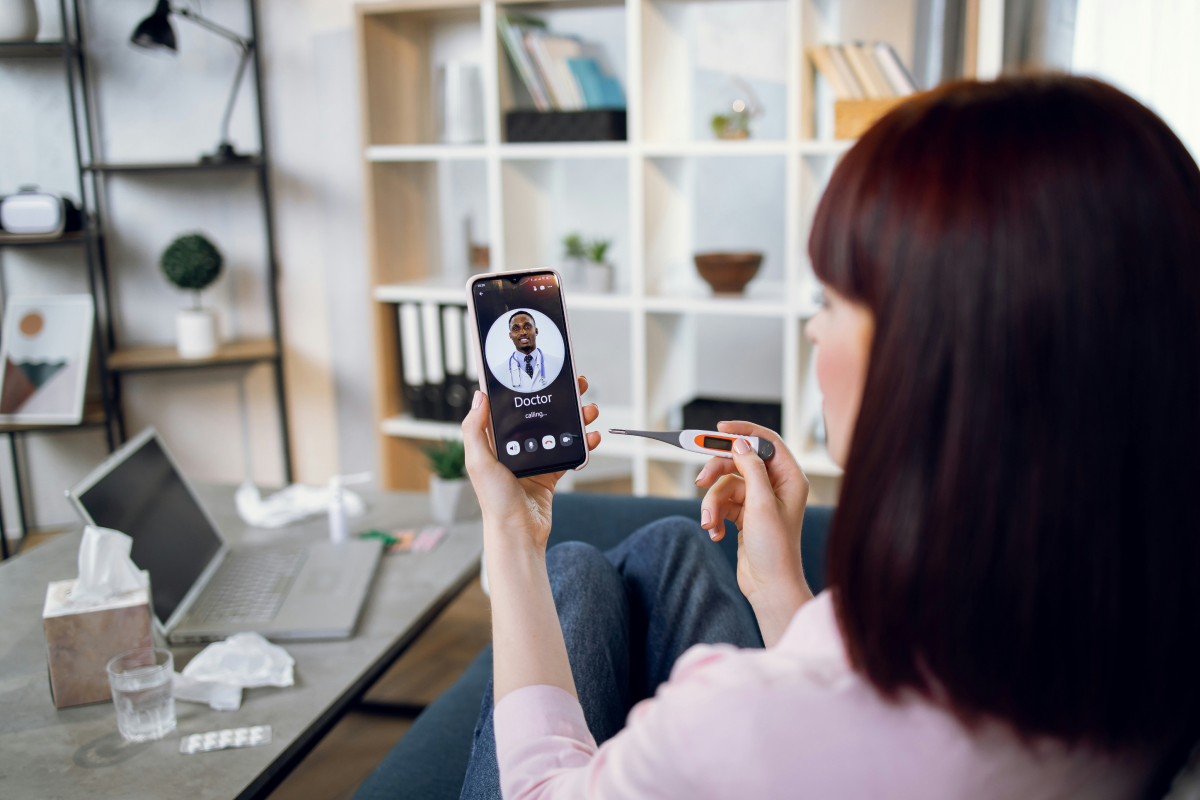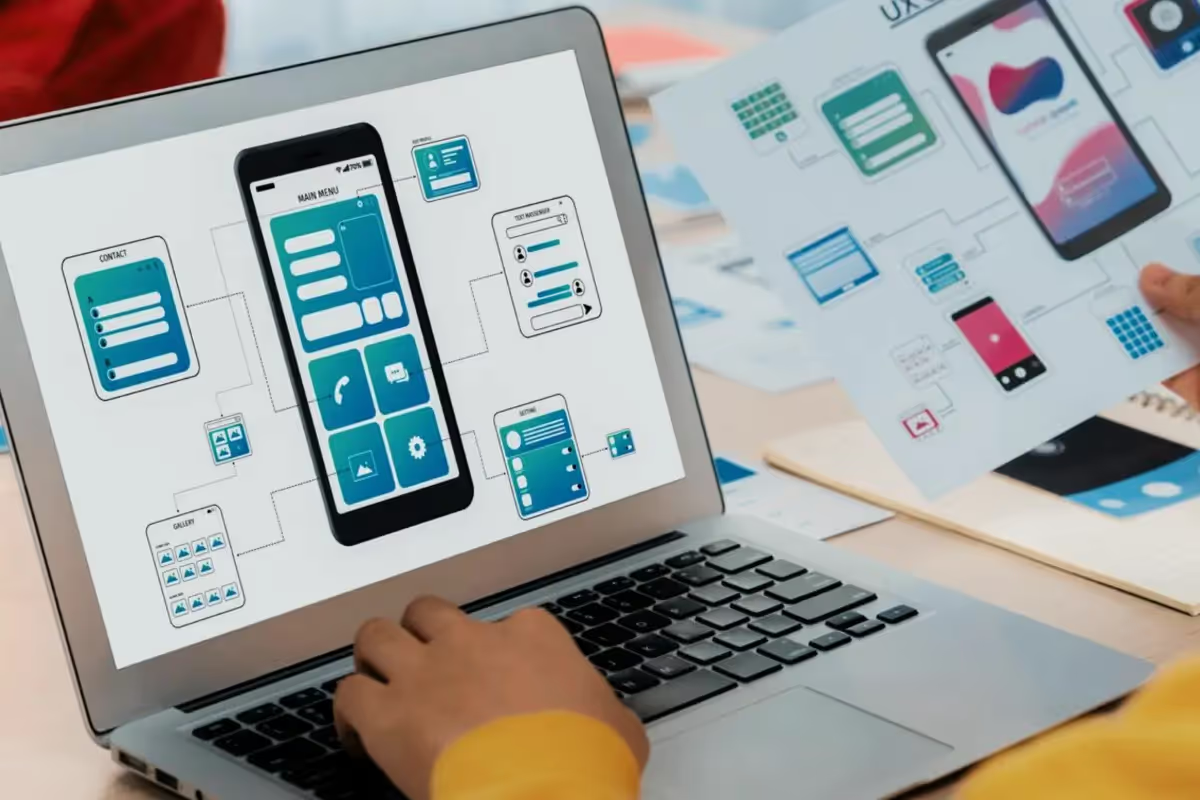We usually write articles based on our experience with clients but today's one is slightly different. I'll tell you how we developed our internal product, not an external one. You'll see in very detail how we work on mental health app development – check the hypothesis, conduct Discovery, and what tech stack we use to create awesome and competing software.
The product we’re working on is called Rozmova. It's a mental health app for finding therapists. The story behind this product is, of course, personal pain. I don't remember exactly what the trigger was, the corona crisis or other issues, but the point was when I decided to search for a therapist, I found it insanely complicated. Call it a fate or a coincidence, but several weeks after that, Dima Kovalenko, Uptech CEO, shared his idea of developing a mental health platform to help people find a proper therapist and asked me to be a Product Manager. I jumped in with no hesitations.
I have been working on Rozmova since summer 2021, so I have many insights regarding the development process, monetization models, and security issues to share with you. Get yourself comfortable, and let's start!
Hold On, What’s There on the Mental Health Market?
First, investment in mental health-focused startups has increased since 2017. We can see it very distinctively from the Crunchbase database.

Investors pumped nearly $2.6 billion into the mental health-focused companies from 2016 to 2020. Important to note that almost $1 billion of that was handed out in 2020 alone, which saw a 112% increase in total investment compared to 2019. Sounds promising, isn't it?
But everything is not that straightforward. At the beginning of this year, TechCrunch reported a drop in the VCs' investments, comparing Q1 2022 with Q4 2021. "So, yes, the sectors that saw a material bump in their market demand and prominence among investors are seeing declines, just as we expected." – they wrote.
So what is actually to expect from the mental health market in the nearest feature?
I think the mental health market may continue to experience a drop, and you should be ready for that. But investors are hungry for innovations in healthcare. If you want to attract their attention and compete in the mental health market, you should bet on technologies such as:
- Machine Learning (AI);
- Data Analytics;
- Telehealth.
Things to Consider Before Mental Health App Development
Now when the state of the mental health market is clear, let’s move further. I know how helpful it’s to have someone who has already passed your road and can give you a piece of advice. It saves your time and money. That’s why below I gathered 5 key things you should mind before developing a mental health app.

Target Market
To meet the needs of your target users, you should know where they are. I mean, literally, you should know where they live. The culture, community-specific considerations, perception of mental health, and socio-economic situation of your target market shape everything in your product – the value proposition, features, design, user flow, copy, etc.
Uptech tip: So I recommend you start with deep research of your target market/s. Analyze the culture and the mental health perception of your target audience. We at Uptech conduct a product discovery to unveil all these details.
Domain Expertise
The expertise in the mental health domain matters. This is not only because an expert has the background and knowledge but because of a level of engagement in the mental health niche. The way a domain expert formulates the problem, asks questions, generates ideas, predicts risks, etc., differs from your lens as a startup founder. This expertise often becomes crucial in the decision-making process.
Uptech tip: My advice is to enlist the support of someone who is an expert in the mental health industry. For example, we engaged a psychotherapist with HR experience while mental health app development.
.png)
Support Team
"Satisfaction guaranteed or your money back" is a business promise made by Montgomery Ward, a U.S. retail corporation, in 1875. They used the vow to differentiate their mail order catalog, and many businesses use it nowadays.
72% of customers will share a positive experience with 6 or more people.
Good experience with the support team makes your customers happier, so they are more likely to recommend you to their friends. In fact, 72% of customers will share a positive experience with six or more people.
In mental health app development, a professional support team isn't only about the users' satisfaction but the responsibility. Your users are people with different mental conditions, and you have to provide them with as smooth experience as possible.
Monetization Models
There are 3 most common monetization models you can opt-in for mental health product development.

Direct-to-consumer (D2C)
The revenue source of the D2C model comes from end consumers paying for the services. Below I gathered the examples of the D2C monetization model:
- Subscription, registration fee model: when users have to pay to avail the full access to the app.
- In-app purchases model: when users pay upfront for an appointment/consultation. Plus, users can buy credits to get extra lives, etc., if your mental health app has gamification.
- Merchandising model: when users can buy external brand products, such as drugs, mHealth devices, clothes, ect.
How do D2C model is benficial? You don't need to contact with the insurance companies and wait for their approval. The users decide on their own whether to buy or not to buy.
Example:
Ro Mind charges $85/month. The subscription includes online assessment for anxiety and depression, customized treatment plans, prescription medication, ongoing check-ins, and self-guided virtual sessions.
In-App Ads
One more option to monetize your mental health app is through in-app ads. It means that external brands can advertise their products in your app for a fee. The tricky thing here is that some advertising networks can secretly collect app users' data. In addition, there are around 42.7% of internet users worldwide report using an ad blocker.
Uptech tip: If you decide on this monetization model, you should be very attentive to the brands that place ads in your app and check if your audience is actually interested in the products/services ads displayed.
Freemium
Made of the words 'free' and 'premium,' the Freemium model is one of the app monetization strategies. The name of the model speaks for itself. Usually, users download the app for free, use a trial version and then upgrade for a fee. It looks fair, as users can test the app and decide if they want to pay for it.
The meditation app Headspace, for instance, offers users a 7-14 days trial on all content. After the trial period, users can upgrade and take a month or year subscription.
The majority (66.6%) of the leading healthcare and fitness apps use the free or freemium model. (Source: Statista)
Data Security
As I mentioned above, sponsored advertisements can be tricky and gather the users’ personal data and search histories. This is okay for some apps, but the concerns get entirely different when it comes to mental health and healthcare app development in general.
Healthcare app users are quite worried about the type and quantity of their personal information being gathered. That's why, if you plan to launch a mental health app, I suggest you do the following:
- Collect the most vital data only;
- Use compliant 3rd party services;
- Back up users' data;
- Perform functional, unit, data, and instrument testing;
- Integrate end-to-end encryption;
- Acquire a HIPAA compliance certificate.
How We Developed Mental Health App: Process & Insights
Rozmova is a mental health web app that we designed and developed at Uptech. I will explain you how to develop a mental health app, elaborate on the discovery and design process through this case study.
Problem and Assumptions
Everything started with one thought – there's no single tool for therapists and clients on the Ukrainian market. Or better to say, those a few tools that exist don't respond to users' needs. Therapists don't have a digital presence and mostly find new clients through word of mouth. At the same time, people who look for therapists spend much time searching for a perfect match.
Based on this, we made the list of assumptions:
- There's no simple, modern tool that connects clients and therapists;
- Therapists lack digital presence, which blocks acquiring new clients.
- There's stigma around mental health which makes it more difficult for people to seek help.
Discovery
To check our assumptions, we had to empathize with the users. And among all possible user research methodologies, we picked – user interviews.
User Interviews
We conducted 20 interviews with potential users and 8 interviews with therapists via video chat. Important to mention that we interviewed people who are familiar with psychotherapy and visited the therapist at least once.
The questions we asked potential users were around:
- How people cope with stress;
- What their therapy experience was like;
- How they search for therapists;
- Why they consider psychotherapy.
The questions to the therapists were around:
- What type of psychotherapy they use;
- How they find new clients;
- What the flow is: communication channels, booking a session, payment, etc.
Key insights: We learned that many people like venting their emotions to their friends and have difficulties finding a professional therapist who understands them. At the same time, we proved our assumption that therapists lack a single product to contact clients, and the way they set up sessions is brick and mortal.
User Persona
Based on the user research, we identified 2 proto-personas representing the type of users who would be using the solution.

Value Proposition
After the user research, we created a unique value proposition for clients and therapists. Here's how they sound.
For clients: with us, it takes a few minutes to find a therapist who understands you.
For therapists: we provide you the platform for acquiring new clients and developing your personal brand through a digital presence.
Customer Journey Map
We used Customer Journey Mapping (CJM) to map the emotional journey and software interaction of the users who may use our platform for searching for a therapist. CJM helped us to examine the user flow and, what's more, the emotional state at each stage of a journey. This information allowed us to see what stages become blockers or bring negative emotions and consider possible improvements.
Key insight: We identified that emotions start going downhill after users check the therapist's profile. It confuses and overwhelms them with too much information.
Features Prioritization
Insights from product discovery dictated the features that could be useful to the target audience. So based on insights, we have brainstormed the app features. Of course, we couldn't implement them all right away, and we didn't need to. So, we started prioritizing them and decided which are "must-have' and "nice-to-have."
Here're some key features of Rozmova:

Design
The app evolved and evolved, and we moved on to the mental health app design stage. The design process is always about experiments, tests, and iterations and never about a one-suits-all solution. So we started with sketches.
Sketching
Actually, you don't need designers to sketch. I did the first sketch of the screens on my own in Figma. This is a kind of Frankenstein UX, as I call it, when you use screenshots of different ready solutions and just build the structure with their help. But this is super time-saving and gives a lot of benefit to understand your future product.

Usability testing
With these paper sketches, I conducted 5 usability tests. It allowed me to see how people interact with the prototype, check if there are any usability issues, and gather initial feedback on the designs.
Wireframing
This is the stage when a designer joined my forces. I shared everything I found during the usability testing to the UX/UI designer, and he made the prototypes out of it. It helped us to visualize the skeleton of the app without considering design elements like typography, color, iconography, etc.
Iterating
Fast and constant iteration helped us clarify the final design version of the app. We implemented everything that must be included, left some features that could be included for the next app versions, and removed all the rest.
Key insight: After the research and testing, we found that people pay great attention to the therapist's voice and charisma. So we’re planning to add video presentations of therapists in the next app versions.

Development
When we approached the development, we were choosing between two options:
- Native development;
- Nocode development.
The first one is longer and costs more but it’s more customizable. While Nocode development was a perfect solution if we wanted to launch fast, save costs, and check the product/market fit.
In our case, we saw that we have no complex features yet, and our plan was to test the hypothesis and understand whether such a product fits the market. Based on our needs, we chose the Nocode solution called Bubble.io, which suited perfectly.
Uptech tip: If you're launching a startup, I recommend using the no-code solution for testing assumptions fast and at lower costs.
I can't help but mention that we're shifting the app to Native development now as we saw that the product idea is valid and we need to scale. Bubble solution has some obstacles, such as a lack of SEO instruments that is crucial for our marketing goals, and we can fix that by developing a Native app.

Iteration
Based on the feedback we gathered after the product launch, we keep updating the app to make it more valuable and user-friendly. For example, we will imbed a few more features, invest more in marketing, and grow the community around the product.
Continuous product improvement is imperative in the software development process, and interaction is the way to do it.
Mental Health App Development Cost
Last but not least, I'll now unveil the hottest question – how much will it cost to develop a mental health app?
Before any project estimation, we pay attention to several things:
- Complexity of the app;
- Services included;
- Number of platforms.
At Uptech, the average hourly rate is around $50. To give you the rough figures, let's count how much each feature will cost.

The range cost of building a mental health app with full backend infrastructure and design might be around $40-150K. The cost varies from the number of some core features like Therapist's or Customer's Profile, Admin panel specifications, and Video calls or messaging integrations. Note, that the final price includes product management, Q.A., and team communication services.

Mind that the final price depends a lot on the location of the development team. For example, outsourcing a development company in the USA is the most expensive as the rates start from $150/hour. Outsourcing to Western Europe starts from $100/hour, in India around $35/hour. Hiring a company from Eastern Europe, like Uptech, offers you the best quality/price ratio.
Check out our case study on Mental Health App development
Final Word
Through this case study, I guided you through the whole mental health app development process, from identifying the problem to executing the solution. We discussed the importance of domain expertise, mental health monetization models, and security issues.
I hope now you know how to develop a mental health app, conduct project discovery, and pass the design stage. Feel free to use this case study as a roadmap for coming up with your solution. If you're looking for any help, assistance on mental health product development, or lack design or development expertise, contact us. We will be happy to help you!
P.S. Remember to prioritize your mental health:)




































































































